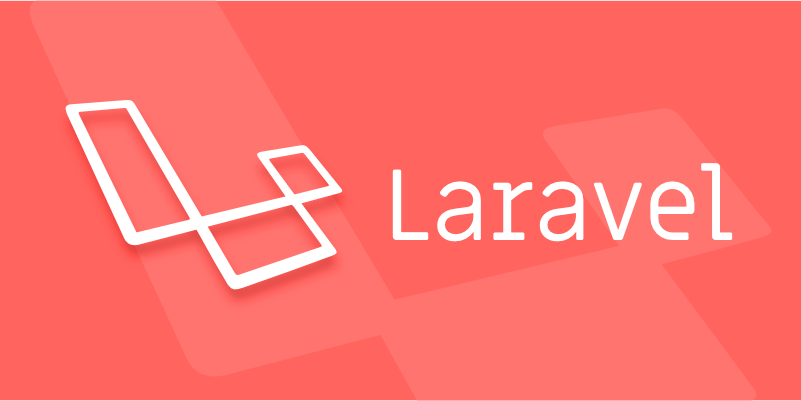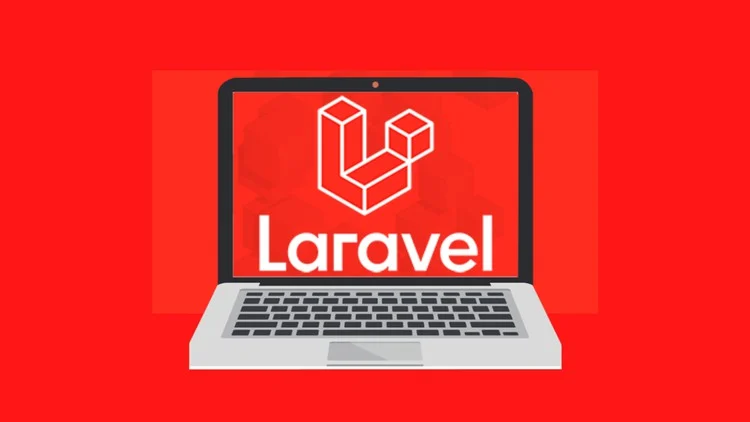Implementing Polymorphic Relationships in Laravel.
Jul 22, 2025 am 01:26 AMA polymorphic relationship in Laravel allows a model to belong to multiple types of models through a single association. 1) It uses two fields: an ID (e.g., commentable_id) and a type (e.g., commentable_type) to dynamically link to different models. 2) To implement it, define a morphTo() relationship on the polymorphic model (like Comment) and morphMany on the parent models (like Post and Video). 3) Laravel automatically manages the correct model and ID when creating or querying relationships. 4) Best practices include following naming conventions, avoiding foreign key constraints, and carefully eager loading related models. Use polymorphic relationships for reusable components like comments or tags, but avoid them when simpler foreign key relationships suffice.

Handling polymorphic relationships in Laravel can seem tricky at first, but once you understand the pattern, it becomes a clean and powerful way to connect different models to a single related model. This is especially useful when you want something like comments or tags to belong to multiple types of models — say, both posts and videos.

What Exactly Is a Polymorphic Relationship?
Polymorphic relationships allow a model to belong to more than one other type of model on a single association. In simpler terms, imagine having a Comment model that can be attached to either a Post or a Video without needing separate foreign key columns for each.
For example:

- A
Commentmight belong to either aPostor aVideo. - A
Tagcould apply to bothArticlesandPhotos.
In the database, this requires two fields: one for the ID (commentable_id) and one for the model class name (commentable_type). Laravel handles the rest behind the scenes.
Setting Up the Database Tables
Let’s walk through setting up a basic comment system that works across multiple content types.

First, create the comments table:
Schema::create('comments', function (Blueprint $table) {
$table->id();
$table->text('body');
$table->unsignedBigInteger('commentable_id'); // The ID of the related model
$table->string('commentable_type'); // The class name of the related model
$table->timestamps();
});The important part here is the naming convention. If you're going to use Laravel's built-in support, stick with XXXable_id and XXXable_type. In this case, we’re using commentable_id and commentable_type.
Defining the Relationships in Models
Now, set up the Eloquent relationships.
On the polymorphic model (in this case, Comment), define a morphTo() relationship:
class Comment extends Model
{
public function commentable()
{
return $this->morphTo();
}
}Then, on the models that can receive comments (like Post and Video), define a morphMany relationship:
class Post extends Model
{
public function comments()
{
return $this->morphMany(Comment::class, 'commentable');
}
}
class Video extends Model
{
public function comments()
{
return $this->morphMany(Comment::class, 'commentable');
}
}That’s all you need to start querying. You can now get comments from a post or video like this:
$post = Post::find(1);
foreach ($post->comments as $comment) {
echo $comment->body;
}And to create a new comment on a post:
$post = Post::find(1); $comment = new Comment(['body' => 'Great post!']); $post->comments()->save($comment);
Laravel will automatically fill in the commentable_id and commentable_type fields.
Tips for Working with Polymorphism
Here are a few practical notes to keep in mind:
- Stick to naming conventions unless you're ready to handle extra mapping manually.
- You can have multiple polymorphic relationships on a single model if needed. For example, a
Tagmight relate to bothArticleandPhoto, and aVotemight go toCommentorAnswer. - Be careful with eager loading — you’ll need to load both the relation and the morphed model. Use syntax like:
Post::with('comments.commentable')->get(); - Polymorphic relations don’t work well with foreign key constraints in databases because they reference multiple tables. So, it’s usually better to skip enforcing them at the database level unless you're certain about your setup.
- You want one model to be associated with several others.
- You're building reusable components like tags, likes, or logs.
- You only need to relate two models — a regular foreign key is simpler.
- You need strict database-level foreign key constraints.
When to Use It (and When Not To)
Use polymorphic relationships when:
Avoid it if:
That’s the core idea behind polymorphic relationships in Laravel. Once you’ve used them a couple times, they become second nature. Just remember to plan your schema carefully and test how data flows between models.
The above is the detailed content of Implementing Polymorphic Relationships in Laravel.. For more information, please follow other related articles on the PHP Chinese website!

Hot AI Tools

Undress AI Tool
Undress images for free

Undresser.AI Undress
AI-powered app for creating realistic nude photos

AI Clothes Remover
Online AI tool for removing clothes from photos.

Clothoff.io
AI clothes remover

Video Face Swap
Swap faces in any video effortlessly with our completely free AI face swap tool!

Hot Article

Hot Tools

Notepad++7.3.1
Easy-to-use and free code editor

SublimeText3 Chinese version
Chinese version, very easy to use

Zend Studio 13.0.1
Powerful PHP integrated development environment

Dreamweaver CS6
Visual web development tools

SublimeText3 Mac version
God-level code editing software (SublimeText3)
 How to set environment variables in PHP environment Description of adding PHP running environment variables
Jul 25, 2025 pm 08:33 PM
How to set environment variables in PHP environment Description of adding PHP running environment variables
Jul 25, 2025 pm 08:33 PM
There are three main ways to set environment variables in PHP: 1. Global configuration through php.ini; 2. Passed through a web server (such as SetEnv of Apache or fastcgi_param of Nginx); 3. Use putenv() function in PHP scripts. Among them, php.ini is suitable for global and infrequently changing configurations, web server configuration is suitable for scenarios that need to be isolated, and putenv() is suitable for temporary variables. Persistence policies include configuration files (such as php.ini or web server configuration), .env files are loaded with dotenv library, and dynamic injection of variables in CI/CD processes. Security management sensitive information should be avoided hard-coded, and it is recommended to use.en
 What is Configuration Caching in Laravel?
Jul 27, 2025 am 03:54 AM
What is Configuration Caching in Laravel?
Jul 27, 2025 am 03:54 AM
Laravel's configuration cache improves performance by merging all configuration files into a single cache file. Enabling configuration cache in a production environment can reduce I/O operations and file parsing on each request, thereby speeding up configuration loading; 1. It should be enabled when the application is deployed, the configuration is stable and no frequent changes are required; 2. After enabling, modify the configuration, you need to re-run phpartisanconfig:cache to take effect; 3. Avoid using dynamic logic or closures that depend on runtime conditions in the configuration file; 4. When troubleshooting problems, you should first clear the cache, check the .env variables and re-cache.
 How to develop AI intelligent form system with PHP PHP intelligent form design and analysis
Jul 25, 2025 pm 05:54 PM
How to develop AI intelligent form system with PHP PHP intelligent form design and analysis
Jul 25, 2025 pm 05:54 PM
When choosing a suitable PHP framework, you need to consider comprehensively according to project needs: Laravel is suitable for rapid development and provides EloquentORM and Blade template engines, which are convenient for database operation and dynamic form rendering; Symfony is more flexible and suitable for complex systems; CodeIgniter is lightweight and suitable for simple applications with high performance requirements. 2. To ensure the accuracy of AI models, we need to start with high-quality data training, reasonable selection of evaluation indicators (such as accuracy, recall, F1 value), regular performance evaluation and model tuning, and ensure code quality through unit testing and integration testing, while continuously monitoring the input data to prevent data drift. 3. Many measures are required to protect user privacy: encrypt and store sensitive data (such as AES
 How to make PHP container support automatic construction? Continuously integrated CI configuration method of PHP environment
Jul 25, 2025 pm 08:54 PM
How to make PHP container support automatic construction? Continuously integrated CI configuration method of PHP environment
Jul 25, 2025 pm 08:54 PM
To enable PHP containers to support automatic construction, the core lies in configuring the continuous integration (CI) process. 1. Use Dockerfile to define the PHP environment, including basic image, extension installation, dependency management and permission settings; 2. Configure CI/CD tools such as GitLabCI, and define the build, test and deployment stages through the .gitlab-ci.yml file to achieve automatic construction, testing and deployment; 3. Integrate test frameworks such as PHPUnit to ensure that tests are automatically run after code changes; 4. Use automated deployment strategies such as Kubernetes to define deployment configuration through the deployment.yaml file; 5. Optimize Dockerfile and adopt multi-stage construction
 Explain Laravel Eloquent Scopes.
Jul 26, 2025 am 07:22 AM
Explain Laravel Eloquent Scopes.
Jul 26, 2025 am 07:22 AM
Laravel's EloquentScopes is a tool that encapsulates common query logic, divided into local scope and global scope. 1. The local scope is defined with a method starting with scope and needs to be called explicitly, such as Post::published(); 2. The global scope is automatically applied to all queries, often used for soft deletion or multi-tenant systems, and the Scope interface needs to be implemented and registered in the model; 3. The scope can be equipped with parameters, such as filtering articles by year or month, and corresponding parameters are passed in when calling; 4. Pay attention to naming specifications, chain calls, temporary disabling and combination expansion when using to improve code clarity and reusability.
 PHP development user permission management monetization PHP permission control and role management
Jul 25, 2025 pm 06:51 PM
PHP development user permission management monetization PHP permission control and role management
Jul 25, 2025 pm 06:51 PM
User permission management is the core mechanism for realizing product monetization in PHP development. It separates users, roles and permissions through a role-based access control (RBAC) model to achieve flexible permission allocation and management. The specific steps include: 1. Design three tables of users, roles, and permissions and two intermediate tables of user_roles and role_permissions; 2. Implement permission checking methods in the code such as $user->can('edit_post'); 3. Use cache to improve performance; 4. Use permission control to realize product function layering and differentiated services, thereby supporting membership system and pricing strategies; 5. Avoid the permission granularity is too coarse or too fine, and use "investment"
 How to use PHP combined with AI to analyze video content PHP intelligent video tag generation
Jul 25, 2025 pm 06:15 PM
How to use PHP combined with AI to analyze video content PHP intelligent video tag generation
Jul 25, 2025 pm 06:15 PM
The core idea of PHP combining AI for video content analysis is to let PHP serve as the backend "glue", first upload video to cloud storage, and then call AI services (such as Google CloudVideoAI, etc.) for asynchronous analysis; 2. PHP parses the JSON results, extract people, objects, scenes, voice and other information to generate intelligent tags and store them in the database; 3. The advantage is to use PHP's mature web ecosystem to quickly integrate AI capabilities, which is suitable for projects with existing PHP systems to efficiently implement; 4. Common challenges include large file processing (directly transmitted to cloud storage with pre-signed URLs), asynchronous tasks (introducing message queues), cost control (on-demand analysis, budget monitoring) and result optimization (label standardization); 5. Smart tags significantly improve visual
 How to build a content payment platform through PHP How to implement PHP paid reading system
Jul 25, 2025 pm 06:30 PM
How to build a content payment platform through PHP How to implement PHP paid reading system
Jul 25, 2025 pm 06:30 PM
To build a PHP content payment platform, it is necessary to build a user management, content management, payment and permission control system. First, establish a user authentication system and use JWT to achieve lightweight authentication; second, design the backend management interface and database fields to manage paid content; third, integrate Alipay or WeChat payment and ensure process security; fourth, control user access rights through session or cookies. Choosing the Laravel framework can improve development efficiency, use watermarks and user management to prevent content theft, optimize performance requires coordinated improvement of code, database, cache and server configuration, and clear policies must be formulated and malicious behaviors must be prevented.






